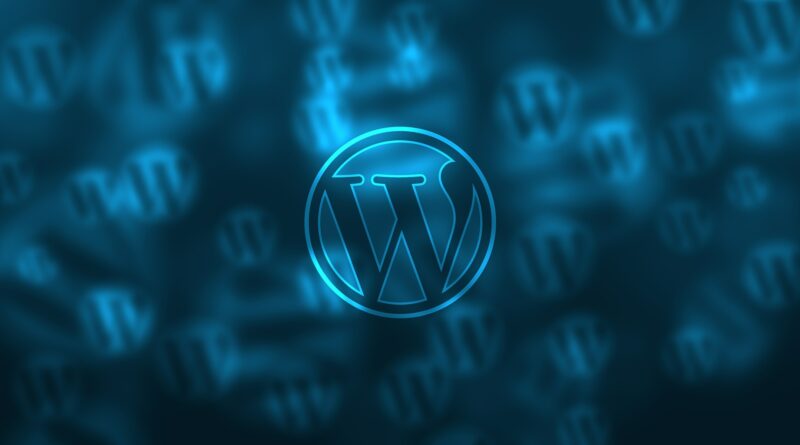A Comprehensive Guide to WordPress Development
WordPress is one of the most popular content management systems (CMS) in the world, used by millions of websites for blogging, e-commerce, and more. With its flexibility and ease of use, WordPress has become the go-to choice for businesses looking to establish an online presence quickly and efficiently. In this comprehensive guide to WordPress development, we’ll take a look at everything you need to know to get started with building websites and applications using WordPress. From setting up a development environment to deploying your website and even offering cryptocurrency exchange development services, this guide is a one-stop shop for all your WordPress development needs. Whether you’re a beginner or an experienced developer, you’ll find everything you need to create powerful and effective WordPress websites and applications.
Introduction to WordPress Development
WordPress is an open-source CMS that’s written in PHP and uses a MySQL database. It’s designed to be easy to use and customizable, making it a popular choice for websites of all kinds. WordPress is free to use and is supported by a large community of developers and users.
WordPress development involves creating themes, plugins, and custom functionality for WordPress websites. This can include creating custom post types, taxonomies, and APIs. WordPress development requires knowledge of PHP, HTML, CSS, and JavaScript.
Setting Up a Development Environment
Before you can start developing for WordPress, you’ll need to set up a development environment. This involves installing a web server, PHP, and MySQL on your local machine. There are several software packages that can help you set up a development environment, including XAMPP, WAMP, and MAMP.
Installing WordPress
Once you have your development environment set up, you can install WordPress. This is a straightforward process that involves downloading the WordPress files and uploading them to your web server. You’ll also need to create a MySQL database and configure WordPress to use it.
Understanding the WordPress File Structure
WordPress has a specific file structure that’s important to understand when developing for the platform. This includes the wp-content directory, which contains themes, plugins, and uploads. It also includes the wp-admin and wp-includes directories, which contain the WordPress core files.
Themes and Templates
Themes are the visual design of a WordPress website. WordPress uses a template system to display content on the website. This involves creating templates for pages, posts, archives, and more.
Creating Custom Themes
Creating custom themes involves creating custom templates and styling them with CSS. WordPress provides a set of functions that can be used to display content in the templates, including get_header(), get_footer(), and the Loop.
Child Themes
Child themes are a way to extend existing WordPress themes. They allow you to make changes to a theme without modifying the original theme files. This is useful for making updates to a theme without losing your customizations.
Plugins
Plugins are packages of code that extend the functionality of WordPress. There are thousands of plugins available for WordPress, including plugins for e-commerce, SEO, and social media integration.
Creating Custom Plugins
Creating custom plugins involves writing PHP code that interacts with the WordPress API. This can include creating custom post types, taxonomies, and shortcodes.
Custom Post Types and Taxonomies
Custom post types and taxonomies allow you to create custom content types in WordPress. This is useful for creating complex websites that require custom content types.
WordPress APIs
WordPress provides a set of APIs that allow you to interact with the platform. This includes the WP_Query API, which allows you to query the WordPress database for posts, pages, and other content.
Security
Security is an important consideration when developing for WordPress. WordPress is a popular target for hackers, so it’s important to take steps to secure your website. This includes keeping WordPress and its plugins and themes up to date, using strong passwords, and using security plugins.
Performance Optimization
Performance optimization is another important consideration when developing for WordPress. This includes optimizing your website’s code, compressing images, and using caching plugins. Performance optimization can improve your website’s speed and user experience.
Multilingual Websites
WordPress provides support for multilingual websites through plugins like WPML and Polylang. These plugins allow you to create translations of your website’s content and provide language switchers for your visitors.
Deployment
Once you’ve developed your WordPress website, you’ll need to deploy it to a web server. This involves transferring your website’s files to the web server and configuring your domain name to point to the server. You can deploy your website using FTP or a file manager, or by using a deployment tool like Git.
Conclusion
WordPress development is a complex and rewarding process. With the knowledge and skills outlined in this guide, you’ll be able to create custom themes, plugins, and functionality for WordPress websites. Remember to prioritize security and performance optimization, and don’t be afraid to experiment and learn as you go.
FAQs
- Can I develop for WordPress without knowing PHP?
- While it’s possible to develop for WordPress without knowing PHP, a basic understanding of PHP is recommended for more advanced development tasks.
- Do I need to be a web developer to develop for WordPress?
- No, anyone can develop for WordPress with the right knowledge and resources. However, a basic understanding of web development concepts is recommended.
- Can I sell WordPress themes and plugins?
- Yes, you can sell WordPress themes and plugins through marketplaces like ThemeForest and CodeCanyon, or by creating your own website to sell your products.




